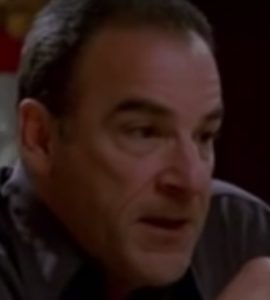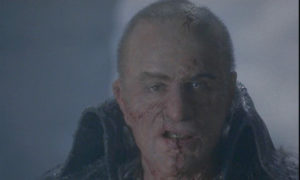Why Finally? Because this is the reason I’ve had trouble coming up with Friday posts lately. You’d think an ’80s kid like me would’ve seen enough After-School Specials to avoid these traps, but no: I am addicted to Criminal Minds.
The Premise: In no particular order: murder, kidnapping and murder, murder, murder, rape, rape + murder, child murder, murder, profiling. (More specifically: a team of FBI profilers, led by expert Jason Gideon and later by David Rossi, travel the US to catch the perpetrators of all that violence aforementioned.)
Did you see how the word “murder” began to not even look like a real word up there? That’s sort of what it’s like to watch this show sometimes.
Given my fondness for mystery and cop series and this show’s decade on the air, it’s odd that I hadn’t given Criminal Minds a try before this year. On the other hand, I’ve noticed that when I tell people what I’m watching, they make this…throat-noise, as if I’d announced some personal tragedy. I don’t blame them, either, at least for the first two seasons: the problem with Mandy Patinkin as Jason Gideon is that he’s way too good in the role. You feel every iota of Gideon’s pain, frustration, and building mental collapse—so much so that I began to think people who make it through seasons 1 and 2 should get achievement certificates.

Edged in black, of course.
Criminal Minds can be super depressing. It’ll make you afraid to own a home, have a routine, play a sport, or make contact with other humans in any way. Most episodes aren’t even really mysteries in the usual sense of the term: the first suspect is often the right one, and the mystery is how to get one step ahead and maybe save one of the (many, many…and sometimes even many-er than that) victims.
But something happened around the middle of season 3: the characters started to work better as a team, and the show began to let us see more of them personally. Instead of relying solely on a few minutes with hacker Penelope Garcia to lighten the mood from SadCon 1, Criminal Minds started to level out a bit. Perhaps the people responsible for the show realized that creeping dread wasn’t what an audience should feel when approaching their TVs; I don’t know, but I am grateful.
The Verdict: It’s kind of the same verdict as my old Beauty and the Beast review: I like it—to the point I am ignoring my blogly duties—but don’t necessarily enjoy liking it. Fainthearted viewers might want to skip the Gideon years; fainthearted viewers might also look through some of the other reviews I’ve written to get an idea about what “too murdery” could possibly mean in the context of the things I watch.
Might go well with: You’ll probably want something significantly lighter as a palate cleanser—I’ve been alternating this with Kolchak: The Night Stalker because I have a weird idea of “light.” And honestly, food is going to be hit or miss with this one.
Next time: A “Quest”ion of identity.






